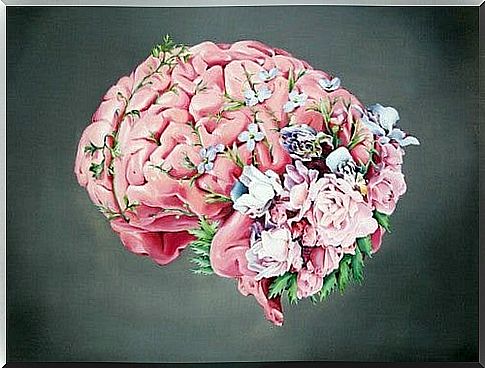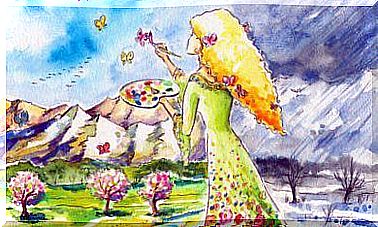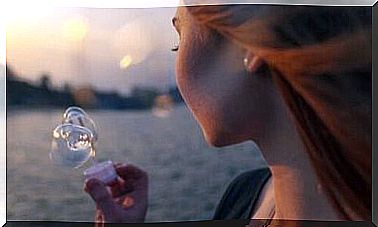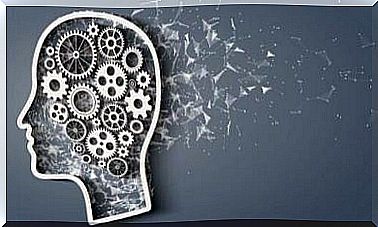Resistance: Are We Plastic, Glass Or Steel?

Are we plastic, glass or steel? How we deal with daily difficulties determines the material we are made of. Some advice on resistance indicates that we have time to alter our way of being and coat ourselves with a more optimal material, a cross between bamboo and graphene.
If there is a decisive aspect to enjoying adequate mental and emotional well-being, this is understanding the mechanism we employ towards the obstacles of life. Two of the most common responses we usually apply are prevention and tranquility or non- resistance .
We don’t have to blame ourselves for not being able to give another response when we are under stress. When we are suffocated by other people or find ourselves in a dead end tunnel, we must pay attention to a particularly relevant aspect: the need to escape or to remain calm are programmed responses of our brain. They are defense mechanisms set by default that we have not yet updated. Benignly designed resistance mechanisms, which actually help us survive. These, however, hardly contribute to our happiness.
In this sense, understanding how to improve our endurance is directly related to our happiness. Finding out can be of great help to us.

Brain more or less resistant to emotional stress
Many of us will have asked ourselves this question at least once: Why do some people manage to cope with adversity in such an extraordinary way? We are surprised by their temperament, their optimism and their ability to see possibilities where we see only walls and barbed wire. Will they have prepared themselves? Did they participate in any courses? Do they have certain innate abilities? Do they possess a particular brain ability?
The answer lies precisely in the brain. It may sound curious, but there are people with much more stress-resistant brains. Others have a personality with more emotional resources to calm anxiety and irrational mental speech in borderline situations.
An interesting study was conducted at the Weill Corner medical school in New York which determined the direct relationship between an education based on healthy attachment and a more skillful response to stress and anxiety.

Inadequate attention and an education characterized by affective deficiencies alter the brain development of children. In particular, the most affected structure is the amygdala, which is the oldest and most sophisticated neurological control center, charged with regulating fear and emotions. Thus, a child exposed to educational models lacking in some respects has greater difficulty in managing their emotions, during childhood and in mature age.
Resistance: are we plastic, glass or steel?
Just as we said at the beginning, it doesn’t matter what kind of mechanism we use to respond to difficulties, stress or adversity. It does not matter if we flee or if, like a tree in the midst of the storm, we remain calm until little by little we bend and break. We can all learn new strategies thanks to our brain plasticity.
Training and stimulating the brain to apply new methods and renewed strategies makes it a more resilient, skilled and sophisticated machine. The goal is to make sure that the brain doesn’t just help us survive; what we want, after all, is that you support us in this intent to be happier.
So let’s see what are the three most common responses to manage stress and the types of resistance they use.
The answer of steel
Stress bounces off people of steel. This attitude is unhealthy and has its risks. Being completely impervious to stress will never make us learn from it. Plus, none are completely waterproof. Our coating is purely emotional.

In this case we must understand that it is not necessary to be a wall and make sure that the problems bounce back on us. Instead, we need to develop the right skills to better manage problems. We must be able to control, filter and transform them.
The answer of plastic
Among the various strategies of resistance, there is one that is applied by many of us. Its features are as follows:
- We have various bruises that are the result of stress and problems.
- We are flexible and sometimes enjoy a certain kind of endurance. Nonetheless, we often feel like we can’t do it anymore. It’s a bit like living on a tightrope.
The answer of the glass
The response of the glass is not the most adequate. In fact, it is the worst of all. It has fewer resources and after making a great effort to adapt, it breaks down. So that either it imposes itself or it destroys itself.
Healthier strategies for developing endurance
Healthier strategies for developing endurance require certain behavior. We have to find an intermediate point between strength and sensitivity. In addition, a space of maturity is needed in which to manage, prioritize and transform. For example, if we let our innate psychological defenses act, we use the method of least resistance: that of glass.
On the other hand, if we choose the line of greatest resistance, we use all our energies to oppose something. We will do everything we can to erect a wall to protect us from life. This is undoubtedly the strategy of steel.

If these two answers are not suitable, what strategy should we adopt? The solution to enjoying healthier stamina lies in empowering self-confidence. This will allow us to feel deserving of something better. Let us not be crushed, but let us not rise like a steel pole bearing the impact of a storm.
Rather we build something somewhere between stronger plastic and bamboo. A flexible, yet strong material. Something that allows us to move among the difficulties of life, learning from them. A material that even if it bends, returns to its original position having learned a lesson that allows it to move forward with more ease.
Let’s start working on this vital strategy today.









